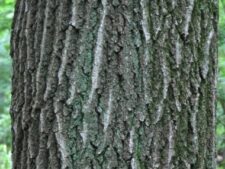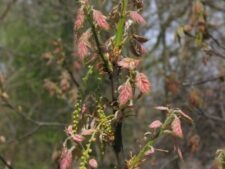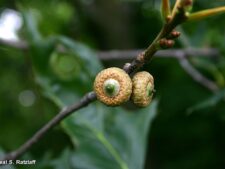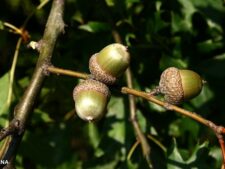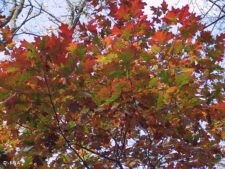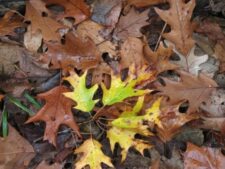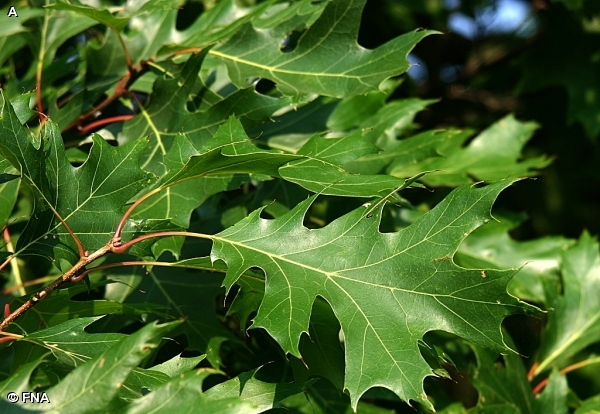
This large native tree grows up to 100 feet tall with a straight trunk more than 2 feet in diameter. The mature bark has flattened ridges (B). Winter twigs are brown and have a terminal cluster of pointed buds (C). The mature leaves are up to 9 inches long, with uneven, pointed, bristle-tipped lobes (A). The younger trees have striking green to red foliage in the fall (G). Leaves on the ground under a Red Oak are shown in image (H). The male flowers form dangling catkins. The female flowers are on the same twig, but small and inconspicuous (D). The fruit, an acorn matures singly or in pairs in the autumn of the second year. A shallow cup holds the ovoid nut (F). In comparison, Bur Oak (Quercus macrocarpa) has deeply furrowed bark, leaves with rounded lobes and acorn cups with fringes.
Grows mostly in upland woods; prefers the ravines. In Fontenelle Forest, common in Child’s Hollow. At Neale Woods, common along the wooded section of Jonas Trail.
The content of NatureSearch is provided by dedicated volunteer Naturalists of Fontenelle Forest who strive to provide the most accurate information available. Contributors of the images retain their copyrights. The point of contact for this page is: Roland Barth.

